In Memory of Syd Mead: The Grandfather of Concept Design
Syd Mead passed away on Monday 30th December 2019, and his loss has been felt deeply around the world. His body of work was ahead of its time both in content and vision, and we want to celebrate the life of Syd Mead, Visual Futurist.
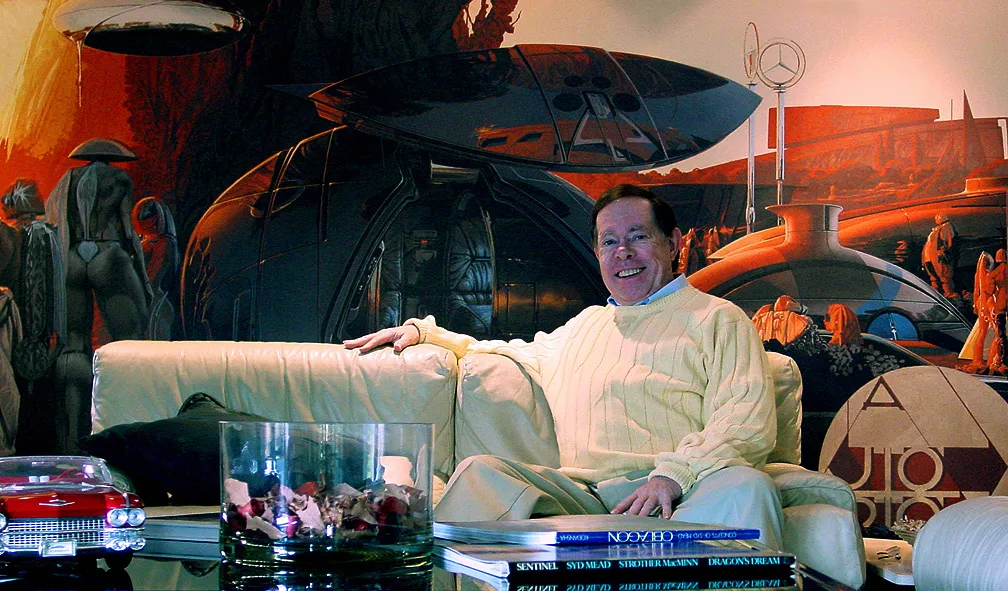
Leonard Teo – CEO – ArtStation
 “In 2005, Syd graciously agreed to be a judge for an art challenge on the forum I was running at the time CGTalk. The theme of the challenge was Grand Space Opera. When Syd saw the final submissions, he remarked at how depressing and dystopian most of the artwork was. What struck me was how much of Syd’s work has a breathtakingly positive quality to them. This is even more relevant today as we are constantly bombarded by dire warnings of a bleak future, Syd’s visions remind us of a bright outlook that we must strive towards.”
“In 2005, Syd graciously agreed to be a judge for an art challenge on the forum I was running at the time CGTalk. The theme of the challenge was Grand Space Opera. When Syd saw the final submissions, he remarked at how depressing and dystopian most of the artwork was. What struck me was how much of Syd’s work has a breathtakingly positive quality to them. This is even more relevant today as we are constantly bombarded by dire warnings of a bleak future, Syd’s visions remind us of a bright outlook that we must strive towards.”
James Clyne – Lucasfilm Design Supervisor, ILM
 “Syd Mead, you will be missed by so many artists, designers, and creators. Not only will you be remembered for your extraordinary ability as a thinker and an artist, but also for your kind generosity in allowing us fledgling artists into your studio, to be inspired directly from the master. Your influence will live well into the far flung future. One that you helped create.”
“Syd Mead, you will be missed by so many artists, designers, and creators. Not only will you be remembered for your extraordinary ability as a thinker and an artist, but also for your kind generosity in allowing us fledgling artists into your studio, to be inspired directly from the master. Your influence will live well into the far flung future. One that you helped create.”
Sparth – Art Director, 343 Industries
 “If you put Syd Mead back into the context of the sixties and seventies, you realize in a snap that he was out of the ordinary compared to the designers of the time. His genuine design vision was above all trends and fashions, as he was re-inventing forms and functions in ways nobody ever did. He spear headed visual efforts that are still nowadays the best standards you can find and get inspired by. In 2006, I was invited to do a talk and a demo in Los Angeles, and I had the combined privilege and bad luck to have my demo scheduled just after Syd Mead’s talk. The stress was real, as Syd was a fascinating creative mind with an unequaled aura. His passing is awfully sad, but his legacy and body of work has become the foundation of today’s entertainment industry. It’s within our visual DNA, forever.”
“If you put Syd Mead back into the context of the sixties and seventies, you realize in a snap that he was out of the ordinary compared to the designers of the time. His genuine design vision was above all trends and fashions, as he was re-inventing forms and functions in ways nobody ever did. He spear headed visual efforts that are still nowadays the best standards you can find and get inspired by. In 2006, I was invited to do a talk and a demo in Los Angeles, and I had the combined privilege and bad luck to have my demo scheduled just after Syd Mead’s talk. The stress was real, as Syd was a fascinating creative mind with an unequaled aura. His passing is awfully sad, but his legacy and body of work has become the foundation of today’s entertainment industry. It’s within our visual DNA, forever.”
Christian Alzmann, Lucasfilm Concept Design Supervisor, ILM
 “Syd Mead was looked at as the designer of the future. He left us with paintings and designs that even after decades still hold up as the standard. Syd also ensured that the vision of his future would continue by educating, inspiring and encouraging the young artists and designers around him. My lasting memory of Syd will be watching him on stage dressed in a LED graphic equalizer t-shirt (hands on hips with a huge smile) as the room of young artists roared and made the lights on his shirt dance.”
“Syd Mead was looked at as the designer of the future. He left us with paintings and designs that even after decades still hold up as the standard. Syd also ensured that the vision of his future would continue by educating, inspiring and encouraging the young artists and designers around him. My lasting memory of Syd will be watching him on stage dressed in a LED graphic equalizer t-shirt (hands on hips with a huge smile) as the room of young artists roared and made the lights on his shirt dance.”
Ben Mauro – Senior Concept Designer at 343 Industries
 “Syd was the grandfather of concept design, creating world class designs and unmatched visions of the future that were uniquely his to the very end. Few people have had such a massive influence on the world of art and design as he did throughout his career. He will be sadly missed by all, but his legacy will live on forever.”
“Syd was the grandfather of concept design, creating world class designs and unmatched visions of the future that were uniquely his to the very end. Few people have had such a massive influence on the world of art and design as he did throughout his career. He will be sadly missed by all, but his legacy will live on forever.”
Jennifer Coronado, Senior Manager, Global Art Department, ILM
 “Syd changed an industry and inspired multiple generations of artists. We were lucky to occupy the same planet as him.”
“Syd changed an industry and inspired multiple generations of artists. We were lucky to occupy the same planet as him.”

MegaCoach
The Syd Mead Story
Syd Mead’s remarkable career included futuristic vehicle designs for U.S. Steel starting in 1959, groundbreaking concept work on sci-fi films like ‘Star Trek: The Motion Picture’, ‘Tron’, ‘Aliens’, ‘2010’, and his best known work on Ridley Scott’s ‘Blade Runner’ and the sequel ‘Blade Runner 2049’. Syd was asked what title he’d like for Blade Runner’s end credits and came up with ‘Visual Futurist’. Though it was an off-the-cuff suggestion, the title perfectly described the work for which Syd Mead would become synonymous.
Syd’s earliest creative memory wasn’t set in the future, but a little closer to his surroundings in South Dakota: “It was a stencil illustration of a guy skiing down a slope when I was in the second grade. I used brown paper, cut out the stencil, and then sprayed it with a white paint supplied by the arts class teacher.”
With a Baptist Minister father, the Mead family was often on the move through Syd’s childhood before they settled in Colorado. Syd’s first job out of high school was for Alexander Film Co. as an animation cell-inker, character originator, and background illustrator. Shortly after, he joined the U.S. Army Corps of Engineers serving two years in Okinawa Japan: “Okinawan culture is a mix of Japanese and Chinese. I became fascinated by the decorative geometry and the stylized depiction of scenario. Then, before I checked out of the Army I spent a month in Hong Kong with a buddy on ‘R and R’ and got more exposure to the oriental culture.”
On his return to civilian life Syd presented his portfolio at Art Center in Los Angeles and was accepted for the fall semester. In the interim, he was asked to work at a new studio in Albuquerque by the former head of studio at Alexander Film Co. He instead took a position designing window displays at the Lerner Shoppe (a chain of women’s wear stores). After graduating from Art Center with ‘Great Distinction’, Mead joined Ford Motor Company’s Advanced Styling Center at Dearborn Michigan where he worked for just over two years. His next position was the chance of a lifetime with Hansen Co. in Chicago where Syd was commissioned to illustrate future vehicle scenarios for a variety of corporate clients.

Asteroid Facility: A large cargo shuttle leaving a planetoid mining and processing facility.
“The highlight of this time was the complete creative freedom I enjoyed doing the series of advertising books for U.S. Steel, Celanese Corporation, Allis Chalmers. The U.S. Steel books went worldwide and definitely launched my career.”
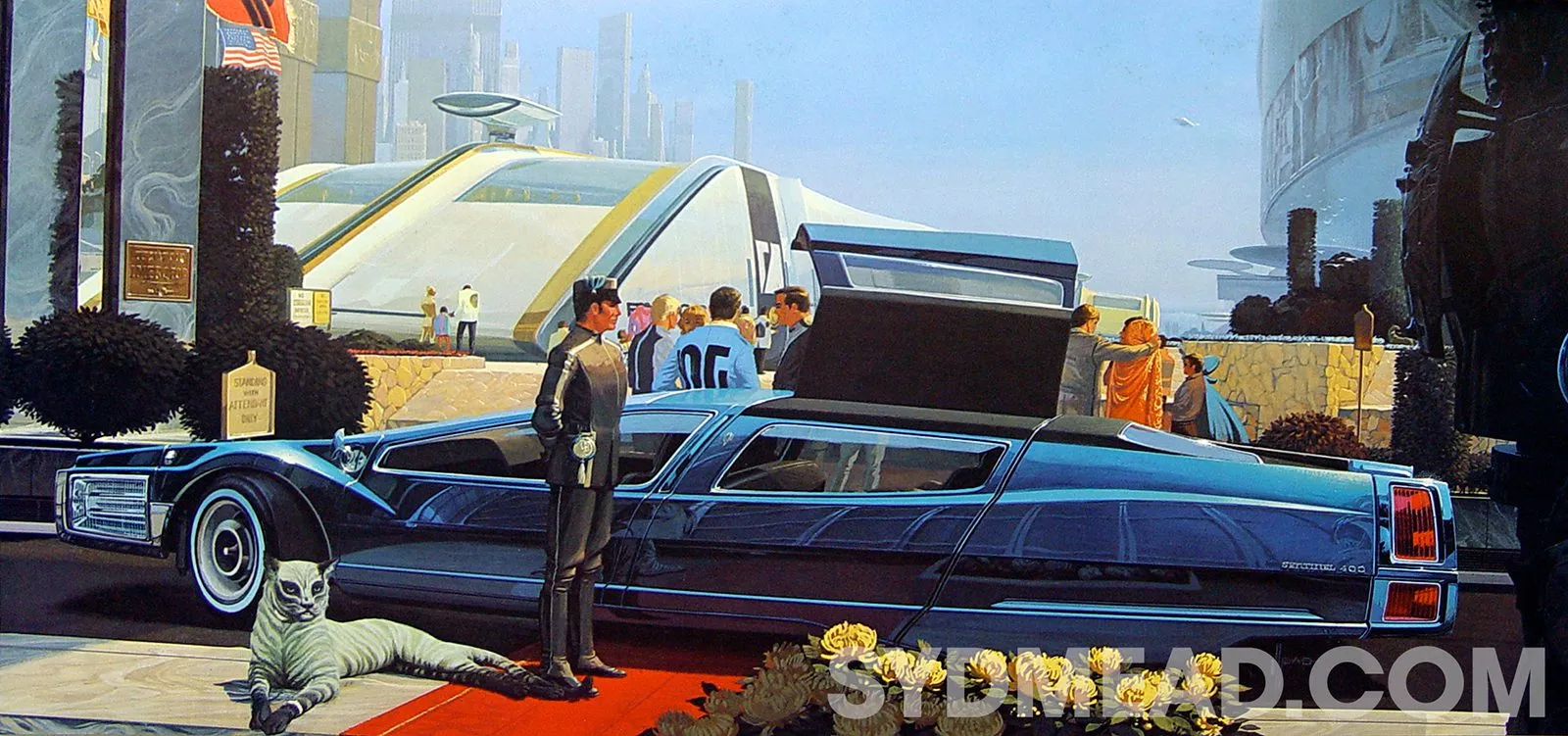
US Steel Series

US Steel Series

US Steel Series

US Steel Series
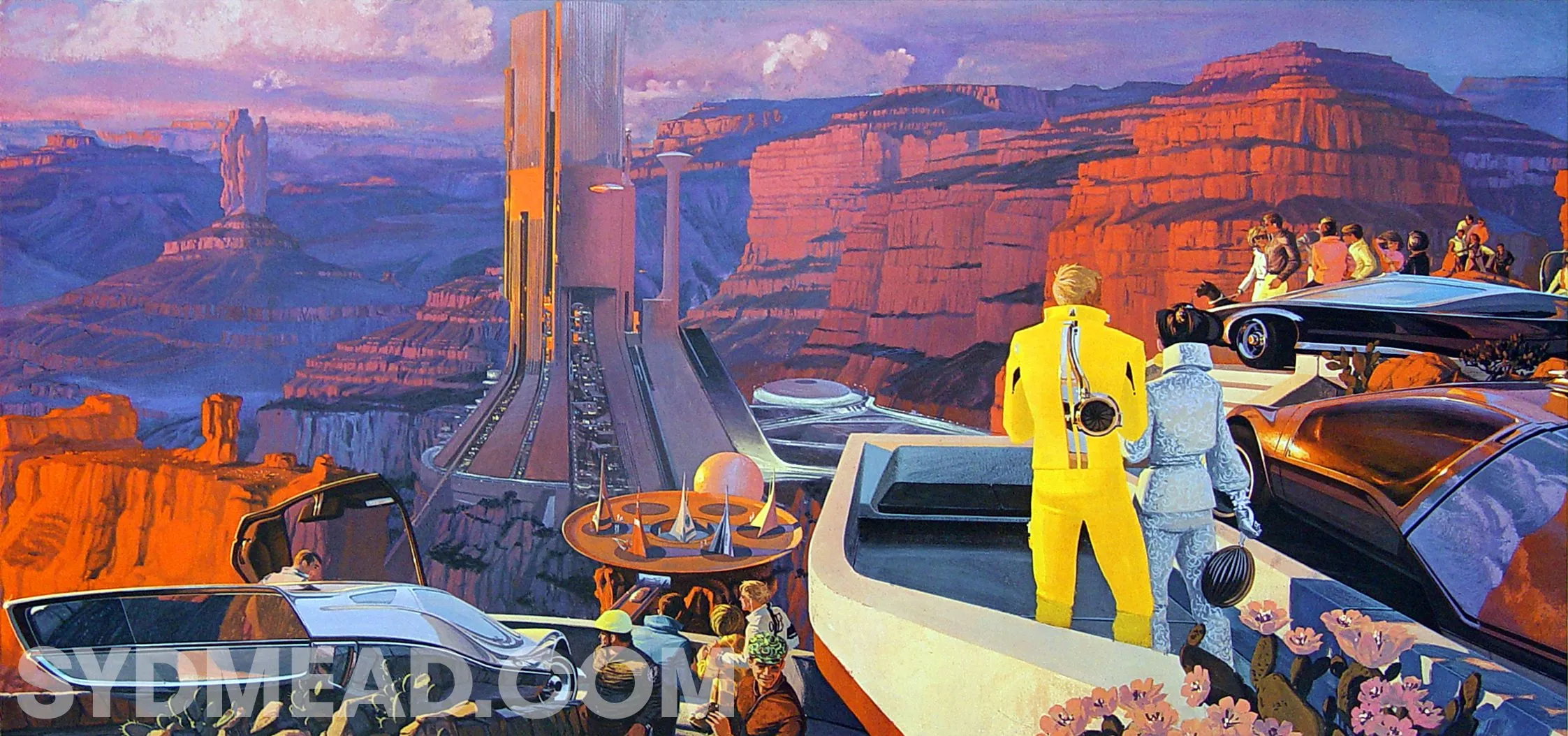
US Steel Series

US Steel Series
At the beginning of the 1970s, Syd started his own company, Syd Mead Inc. which started a twelve-year account with Philips C.I.D.C., and also worked with Raymond Loewy in Paris and New York in addition to other contract work. Syd’s first standalone book was published in partnership with Roger and Martyn Dean in 1976 titled ‘Sentinel’. In 1975 Syd headed to California while continuing his work for the automotive industry and other clients. The next chapter of his career in film began in 1979.
‘Star Trek: The Motion Picture’ was Syd’s first movie project: “I worked with John Dykstra at Apogee in post production designing the V’ger entity—the climax of the film. I had to accommodate an existing hexagonal construct which Paramount had bought from a professor of mathematics at Boston University. The device created a hexagonal orifice when the periphery of the mechanism was rotated.”

Star Trek (The Motion Picture): V’ger entity concept
Syd’s next movie with director Ridley Scott made Syd a household name for sci-fi buffs around the world: “‘Blade Runner’ happened through a series of links to other people in Hollywood, and the book that Roger Dean printed using U.S. Steel illustrations,” he explained. Though it was Syd’s second movie, it was the first he worked on from the beginning of production. In ‘Blade Runner’, Syd’s time in Japan and Hong Kong helped him to envision the memorable future cities complete with backgrounds, interiors, and the now famous ‘Spinner’ flying police vehicle. “While I was doing post production matte painting preliminaries for ‘Bladerunner’, I started work on ‘TRON’ for Steven Lisberger at Disney,” explained Mead. His work on ‘TRON’ included the design of the Sark’s carrier: tanks, light cycle; the CPU; Sark’s camp; various scenic sets and graphics; the title graphic; and alphanumeric ‘TRON’ typeface. After ‘Bladerunner’ was nearing completion, Mead was asked by his agent what he’d like to be called in the end credits to which he replied: “Visual Futurist.”
BLADE RUNNER

Blade Runner: Spinner Perspective View

Blade Runner: Spinner Interior View

Blade Runner: Deckard Police Car
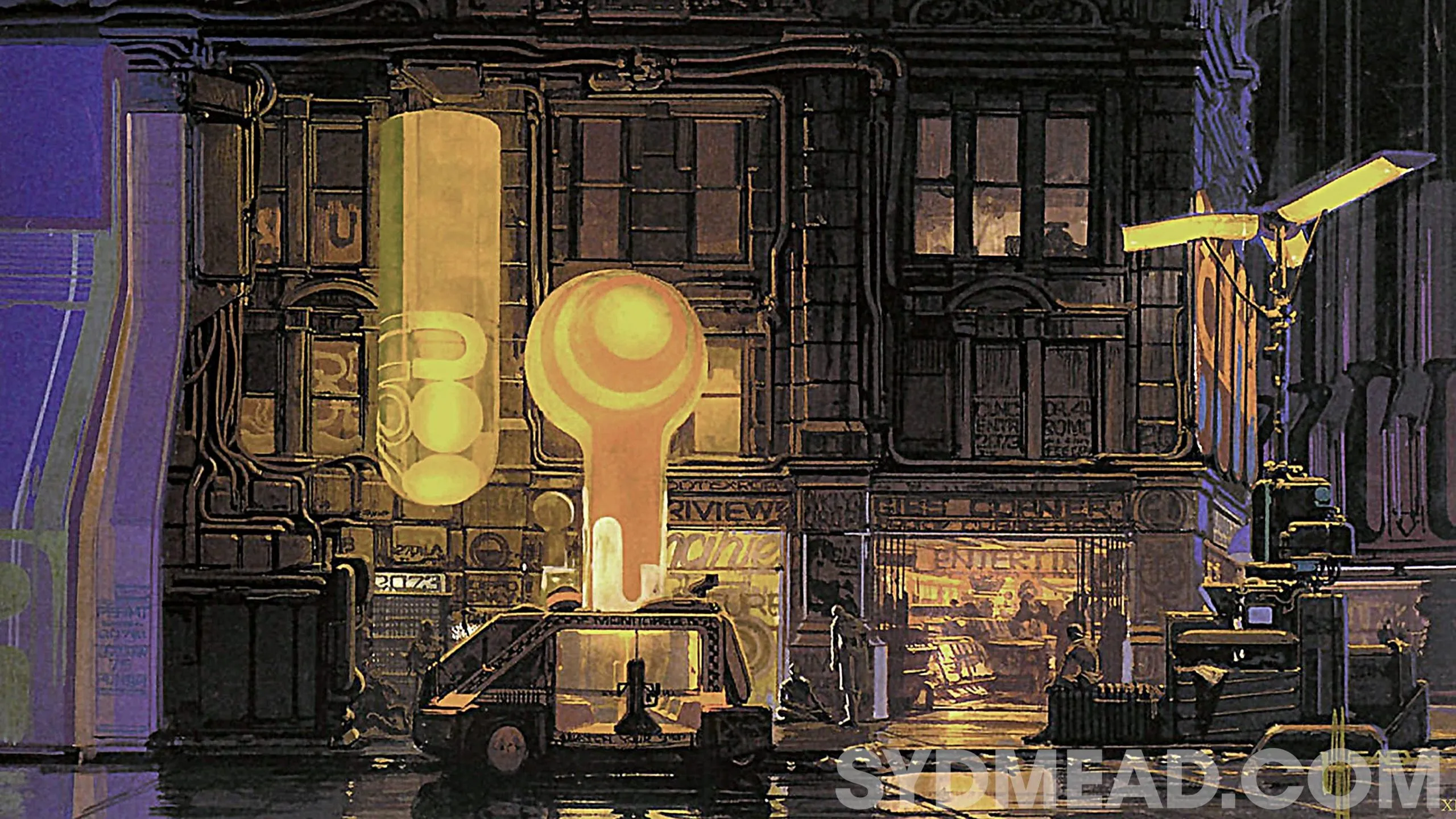
Blade Runner: City Design 02

Blade Runner: City Design 01
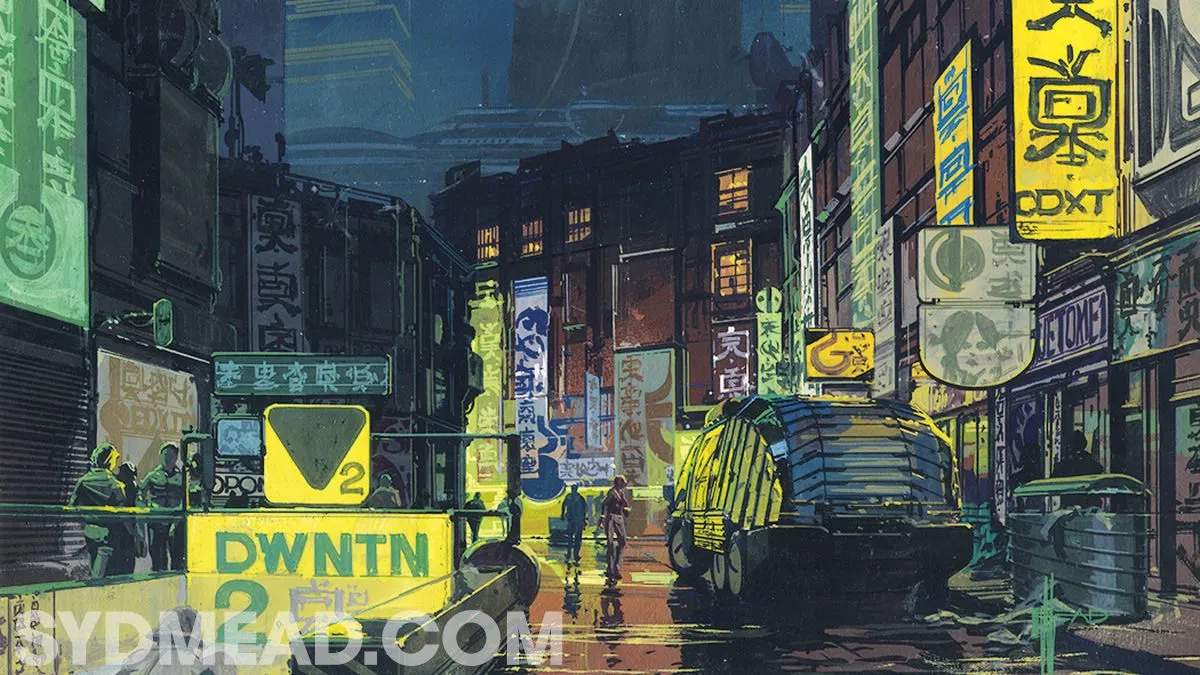
Blade Runner: City Design 04

Blade Runner: Deckard Gun Sketch 01

Blade Runner: Deckard Kitchen
TRON

TRON: Tank Interior Sketch

TRON: Light Cycle Design 03

TRON: I/O Tower Design
2010: The Year We Make Contact

2010: Command Center

2010: Cockpit Design

2010: Pod Design 01

2010: Pod Design 02
Aliens
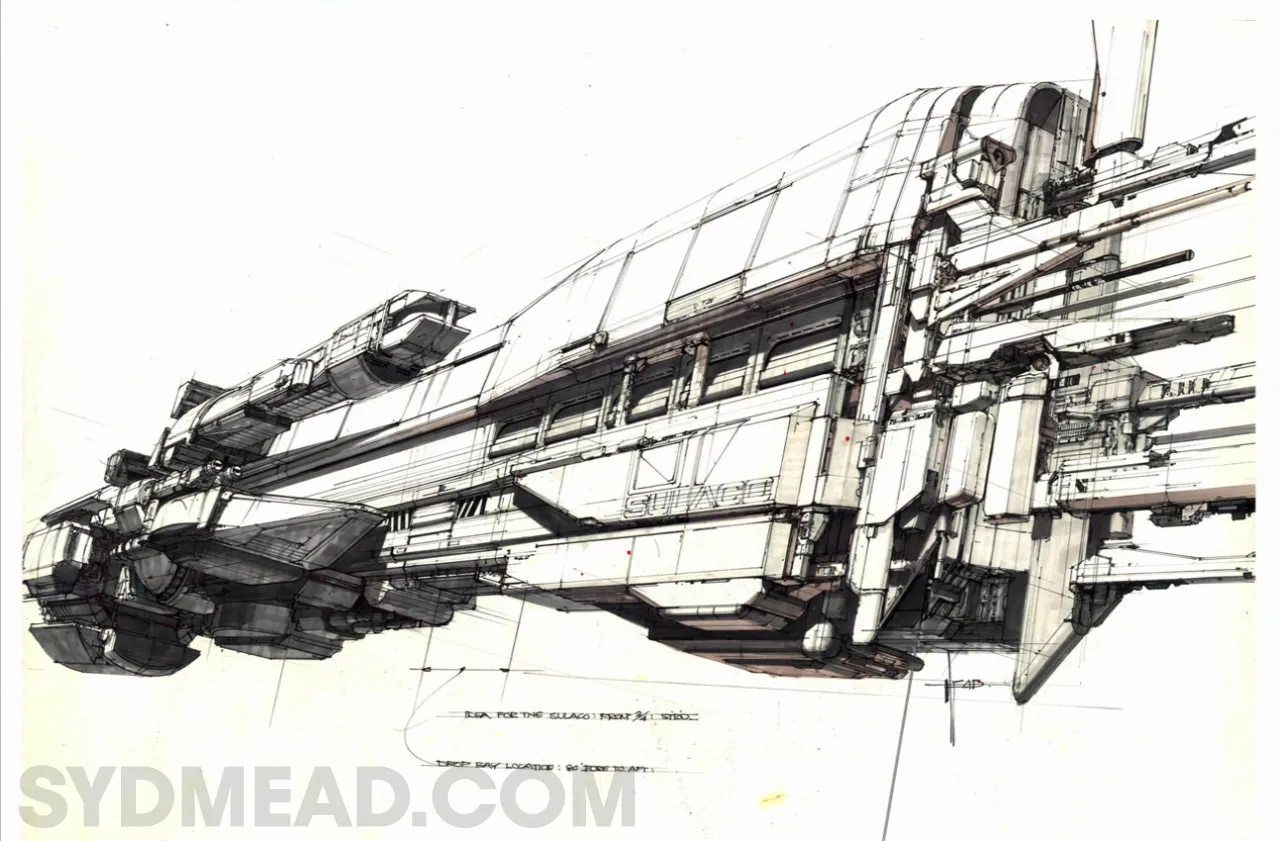
Aliens: Sulaco Ship Final
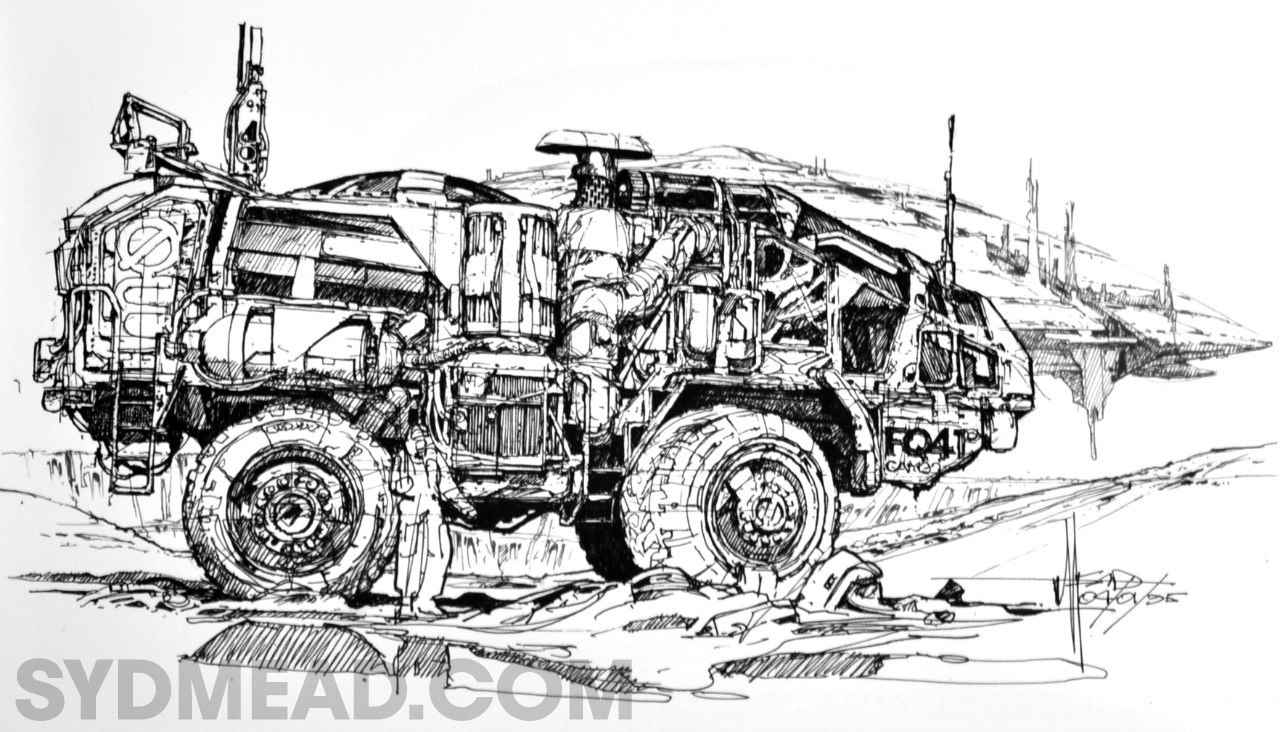
Aliens: Sulaco Transport Vehicle

Aliens: Sulaco Pod Design

Aliens: Sulaco Interior 03

Aliens: Sulaco Interior 01
Mead’s body of work revolves around visions of the future, however, he goes beyond simply painting outlandish futuristic scenes: “I read lay magazines and try to keep up with the technological ‘wave front’ so that when I concoct some fantasy device or scenario, it has some basis in rational concept.”
In 1985 Mead formed OBLAGON, an acronym for a story he had started to write years before—Orbital Biolab@LaGrange Operational Node. OBLAGON has published several books of Mead’s work including ‘Oblagon’, ‘Kronolog’, ‘Sentury’, ‘Sentury II’, and ‘A Future Remembered: An Autobiography’ with help from his business manager and partner Roger Servick.
“The books were our sales force and catalogue, and kept our presence worldwide while normal design account work was in progress.”
Over several decades Syd developed a great understanding of the creative business: “First, have a grasp of context, detail, and the rationale which makes design and image-making worthwhile to yourself and commercially, to someone else. Try not to become a ‘linear’ professional. Learn a variety of techniques, of thinking methodology and most of all, don’t become complacent. Honestly, I get scared shitless every time I start a new, big job. I read, I gather information and push the client to tell me what they want. (Sometimes they really don’t know, and those jobs are usually nightmares!) Remember details, notice how people move, how sunlight cascades over moving objects, why foliage looks the way it does (it’s nature’s own fractal magic) and how come velvet has about the same range of value as metallic surfaces but one is soft and the other is brittle. Finally, don’t assume that technique alone will save your ass. It still is the idea that wins—every time. Remember that elaborate technique and dumb story produces a demo reel, not a narrative.”
Blade Runner 2049
Syd continued to work until September 2019 taking high-profile projects every year, and notably worked on the Blade Runner sequel ‘Blade Runner 2049’ in 2017 where he was asked to imagine the post-apocalyptic Las Vegas by Director Denis Villeneuve.
“I first downloaded street views of Las Vegas and used those accurate views as underlays for my sketches. Those were submitted, and Denis indicated the ones he liked the best.”
According to Villeneuve, “For me, it was important to have one moment where Syd Mead would express himself…When I saw his drawings, I was so moved.”

Blade Runner 2049: Las Vegas design

Blade Runner 2049: Las Vegas design
Tesla Cybertruck
Syd was also in the news in November with the announcement of the Tesla Cybertruck which Elon Musk had commented would “look like something out of Blade Runner’“. Syd responded that “as a long time admirer of Elon Musk”, he was “truly flattered“. Syd’s feedback on the design of the Cybertruck was glowing saying the futuristic-looking design was “stylistically breathtaking” and went beyond his expectations. He also said the Cybertruck “has completely changed the vocabulary of the personal truck market design.”
Syd’s Greatest Gift
Syd Mead presented his work and thoughts in person to audiences worldwide over decades. His generosity of spirit was enormous and leaves the indelible impression of an artist who cared deeply about his own craft, but equally in the craft of current and future artists who would build upon his achievements.
We have lost a very special member of the art community, and a wonderful man.
Vale Sydney Jay Mead.
Images courtesy SydMead.com





















